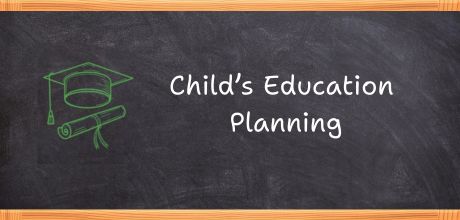What Are Child Education Plans and How Do They Work?

When planning for your child’s education, traditional child plans like ULIPs and endowment policies often fall short due to high costs and lower returns. A smarter approach is to combine aggressive mutual fund SIPs with a term insurance plan for goal protection. Consulting a financial advisor can help create a more effective and customized child education plan.
When it comes to Financial Planning, it goes without saying that planning for your children’s education is going be a top priority goal in your mind. In fact, we tend to accord this financial goal a higher level of importance than even our own retirement. The Life Insurance industry has been the chief beneficiary of this trend, as they have packaged various ULIP’s and traditional policies as “Child Education Plans” over the years. But are these so-called Child Education Plans really worth your dime, or are they a suboptimal choice? Let’s find out.
ULIP or Endowment?
The first thing you should know is that a Child Education plan is no different from your standard ULIP (Unit Linked Insurance Plan) or Endowment policy. It’s just packaged and marketed differently, or designed in a manner that the maturity proceeds come to you at various education-linked junctures in your child’s life (for instance, 1st year, 2nd year and 3rd year of college). So, the first thing you should find out about the child education plan that you’re considering is whether it’s a ULIP or an endowment plan.
It it’s a ULIP…
If the Child Education Plan in question is a ULIP, carefully check all the charges involved. ULIP’s have been notorious for their disguised costs in the past – some of them being fund management costs, switching charges administration charges, amongst others. The next thing you should check about the child education plan is the long-term performance of the underlying ULIP funds. Have they beaten the benchmarks consistently over lengthy timeframes? How have they fared against same category mutual funds? These are some of the questions you should ask. You should also check the mortality cost associated with the life coverage being given by your child education plan, and check how it stacks up against a standard term insurance plan.
If it’s a traditional plan…
Traditional Plans (such as endowment plans or moneyback policies) tend to be even more confusing than ULIP’s. Their features and benefits tend to be quite opaque and difficult to understand, and its hard to say what actually les beneath those 5,000-word sales brochures! You may even find it very difficult to arrive at the actual “return” that a traditional child education plan would provide over the investment tenure. Nevertheless, you should try to decipher the ballpark IRR of the policy, as well as the associated death benefit and waivers that are in place for the child education plan in case of the unfortunate demise of the policyholder.
The correct way
Your Child Education Plan doesn’t necessarily have to comprise of a packaged solution that aims to combine insurance and investment, as these plans invariably end up delivering sub-optimally on both counts. It’s more advisable to discuss your goals with a financial advisor, who will adjust your present-day target amount for inflation and help you arrive at the correct goal target first. Post that, your Financial Advisor will customize a child education plan for your specific needs, depending upon the number of years remaining to the goal, and other factors like the quantum of goal protection that is ideal for your specific case. For most child education plan goals, we find that a combination of aggressive mutual fund SIP’s, combined with simple term insurance for goal protection works a lot better than a packaged solution from a life insurer.
Your Investing Experts
Relevant Articles
Multi-Generational Investment Planning Tips: Boomers, GenX, Millenials, GenZ
No matter your age, the right investment strategy can set you up for financial success. From starting small in your 20s to securing income in retirement, aligning your investments with your life stage ensures you make the most of every opportunity.
Your Child’s Education Goal: A Step-by-Step Investment Guide
Every parent wishes for a bright and secure future for their child, and that includes a quality education. Achieving this goal requires advanced and proactive planning to ensure you’re financially prepared to support your child’s aspirations. In this article, we will explore why it is important to plan for your child's education and some best practices for the same.
Top Wealth Management Strategies for Long-Term Success
The goal-planning process, like a retirement fund, has two important aspects: Wealth creation and wealth management. During your working years, you create wealth by building a retirement fund. During the retirement years, you manage the wealth created so that it sustains you during the retirement years. In this article, we will understand what wealth management is, how it differs from wealth creation, and the best wealth management strategies.
.png)
.jpg)

.jpg)